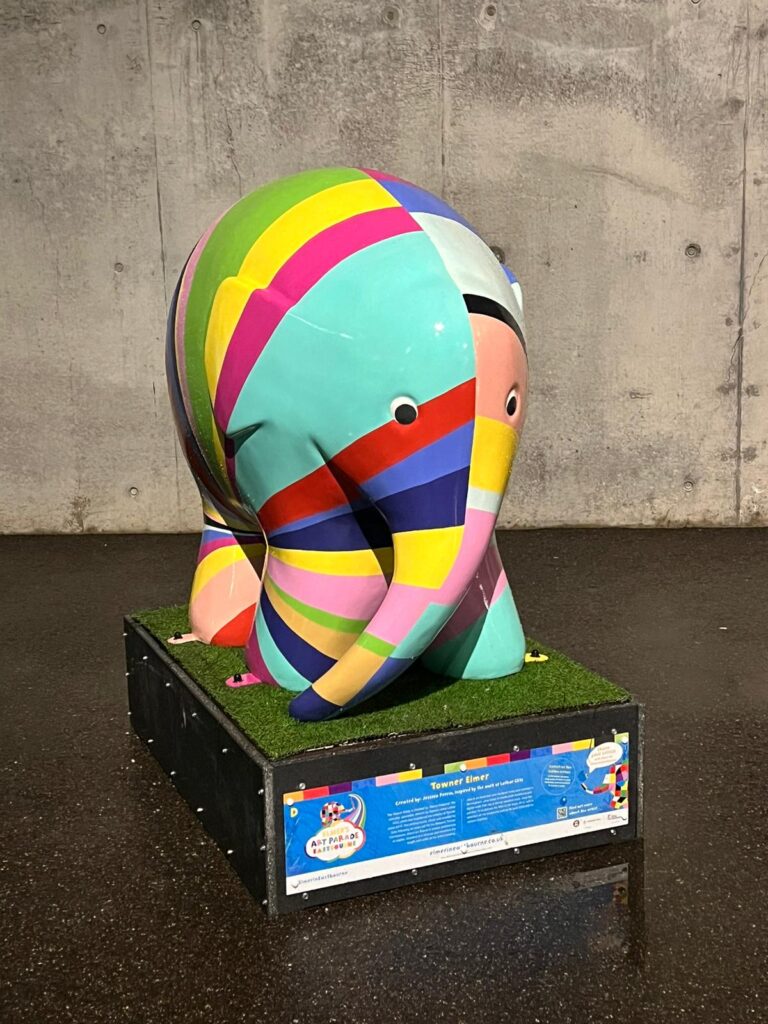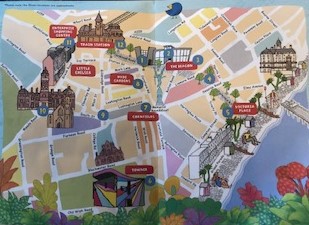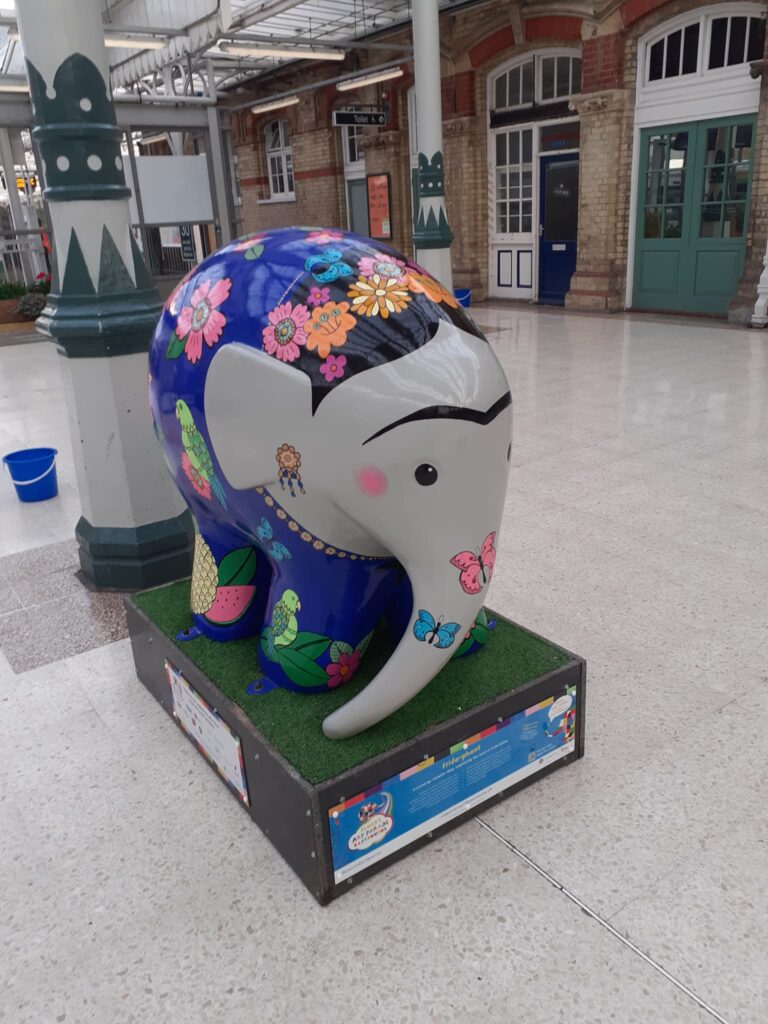Art is on my mind at the moment. Everywhere I turn, I am reminded that it plays a significant role in our lives. At home, I am immersed in a sequel to The Artist’s Way; I’m joyfully working my way through my 15 Minutes Art book and reading whenever I get a chance.
My home town is positively flowering with art on every corner. The beautiful Towner Gallery, below, is hosting the prestigious Turner Prize and, knowing a good tourist attraction when it sees it, Eastbourne council and the gallery have filled the town with art events, sculptures and installations.
If you are interested, here is the website with all the attractions: https://townereastbourne.org.uk/whats-on/eastbourne-alive
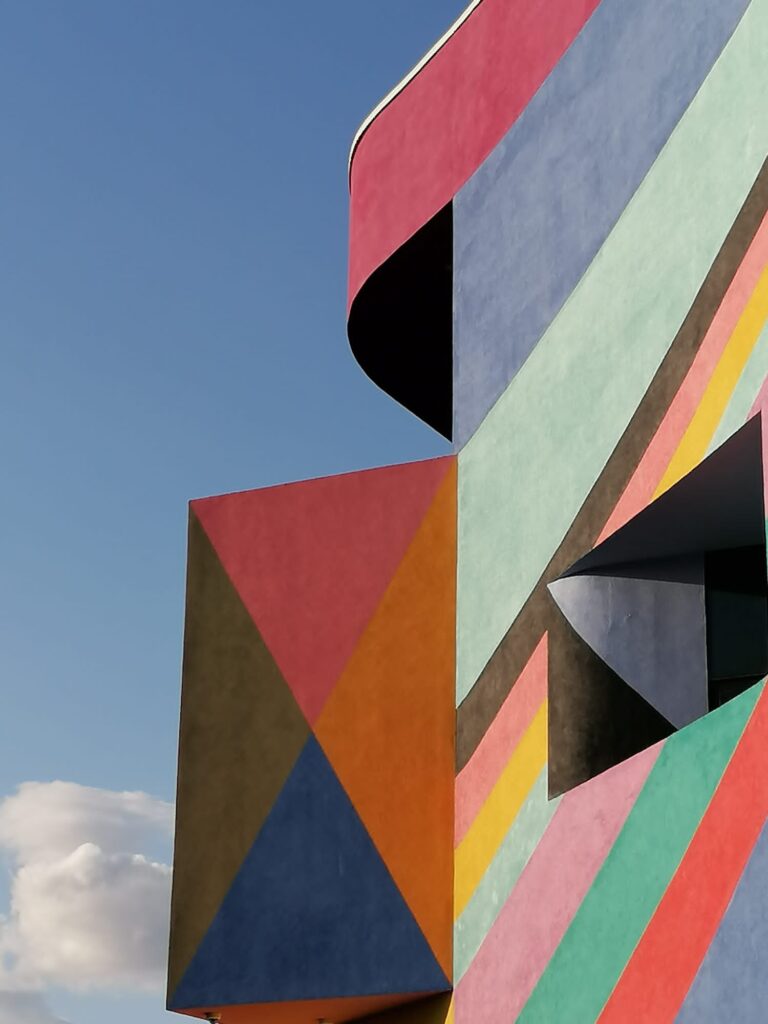
Because art matters
In this time of austerity cuts and a cost of living crisis, one may be pardoned for asking why precious public money is being spent on something so frivolous. I hope to answer that question below, but essentially, it is because life is filled with uncertainty, difficulty and hardship that we need art to uplift and inspire us.
For the benefits of art to be felt though, it needs to be available to everyone. Once, when taking a taxi to the Towner, I got chatting with the driver. Despite living in the town, he had never been, because he did not feel that it was somewhere for him.
I mentioned that it was free, that it was funded by his council tax and though some of the exhibits were a bit bonkers, there was always something worth seeing. If nothing else, the building is a gorgeous space with a lovely cafe.
Because the problem with Art with a capital A is that more often than not it puts off the very people who would benefit from it.
The enemy of Art
My driver was smart and articulate. I suspected that the thing making the gallery off-putting was what my family refers to as ‘art bollocks’. Please excuse the language, but it makes me incandescently angry that the notes accompanying works of art are often entirely unintelligible to even the most educated reader.
At the opening of the Turner Prize exhibition, I bumped into our former MP who said he thought he must be rather stupid, because he really didn’t understand what the artist’s notes were saying. There is nothing wrong with his intelligence. And if a former MP finds them threatening and demeaning, it doesn’t give much hope to the rest of us.
Here is an example of art speak on an earlier exhibition by the Turner Prize winner, Jesse Darling. ‘… how Darling explores systems of power, such as governments, religion, ideology, empire and technology, can be as fragile and contingent as multiple bodies.’ (Dr Giulia Smith on History is What Hurts: The Politics of Debility) Confused? You will be.
I mentioned to the taxi driver that the notes were deliberately obscure and to ignore them. Yet, when I bumped into him again, he still hadn’t been.
Ironically, when you hear Darling speak, he is completely natural and a rather sweet young man, trying to get his message across as clearly as possible. His slightly chaotic exhibition sought to show ‘the messy reality of modern British life’ and if they had used that quote, I suspect more people would have responded more positively to an installation that might be confused with an assemblage at the dump.
That said, I love modern art. These artists are stretching and provoking. They demand that we engage with their art rather than passively enjoying it. Grayson Perry said that ‘Art is the mirror that reflects society and prompts change.’ I’m not sure that I would credit it with such power, but it is an element of all the threads that together shape us as a society. His wonderful book, Playing to the Gallery is a must read for anyone bamboozled by the modern art scene.
Community art
That said, it is possible to engage an audience young and old. Throughout the town, there is an ‘Elmer trail’ of elephants painted in a variety of styles. The Towner one replicates the Lothar Gotz mural on the gallery wall. The trail takes you all around the town and it is a fabulous way to entertain the kids during a rainy half term.
Use the arrow to see more.
Though doubtless designed for the under 10s, adults are equally charmed by these adorable elephants. They simply make us smile. Thus, the first purpose of art, to uplift us, is fulfilled.
Public art
The best art, to my mind, is public art. Storing precious art works in a bank vault with the hope of it accruing value is the most cynical (and in my mind criminal) waste. Artists do what they do to be seen and to express their thoughts. Just like writers and poets and musicians, they have a theme – or an argument – that they wish to make and which their art expresses. Darling’s is that contemporary life is messy – just like his carefully curated, messy installation.
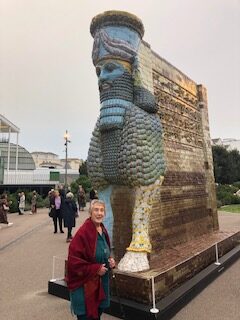
Image: Karen Costello-McFeat
Outside the Towner stands the magnificent sculpture that once graced the fourth plinth in Trafalgar Square. It is made entirely from recycled date cans. Why? To visually present the cost of the wars in Iraq to the people and the environment. Prior to these conflicts, Iraq’s main export, after oil, was dates. Now, of the 30 million date palms in the country, only 3 million are left.
The sculpture of the Winged Bull at Nineveh, upon which this was modelled, was destroyed by Isis, but many others of these sculptures were taken by colonial powers – including the British. The artist is noting that not only have cultural treasures been lost, but the economy that supports them.
Whilst reminding us of Iraq’s dispossession, this impressive work also brings joy on an aesthetic level. We are moved and inspired by its presence. Art has transformed a negative to a positive.
The role of public art is beautifully and comprehensively put by AmherstMA.gov.
Public art adds enormous value to the cultural, aesthetic and economic vitality of a community. It is now a well-accepted principle of urban design that public art contributes to a community’s identity, fosters community pride and a sense of belonging, and enhances the quality of life for its residents and visitors.
AmherstMA.gov
The presence of art in a town can bring economic as well as personal gains. Tourists are flooding to this exhibition and boosting local business. The locals are rightly proud of their town as the backdrop to so much exceptional art. Our shared experience brings us together.
Next week, I shall look at the personal benefits that art can bring to our health and sense of well-being. I hope you will join me then.

